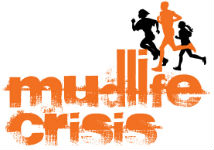I’ve mentioned before that I think one of the greatest reasons to take on obstacle course racing is the effect it will have on your kids. I absolutely believe that, and I’m hardly the only one. Check out the video below and pay close attention to the comments starting at about the 25th second:
We’re doing it to be better – period. I love that. And it’s not just to make ourselves better, it’s to make everyone around us better as well. This applies especially our own families.
I mentioned my daughter’s triumphs with her own kids’ runs at OCR events in the past, but only mentioned my son a bit. He’s autistic – a higher-functioning autistic, but autistic nonetheless. And I recall when I was talking to two personal trainer friends of mine about autism as they were looking at putting together a fitness program for kids on the autism spectrum. The program was to be based on MovNat principles, an idea that I think is incredibly awesome.
MovNat, of course, is largely about reclaiming your evolutionary movement abilities, abilities that we’d normally have had develop as we grew and experienced the natural world without the benefits of chairs, etc. And in the idea of “reverse acclimatization,” our bodies expect this kind of movement and are evolved to function as if they’re going to get it.
But in the case of autistic kids, they may or may not have those movements “hard-wired” into their brains. Because of the sensory issues that they experience (lack of filters for the senses, misfiring neurons, and more) the ability for these kids to move as typical kids move may not be the same. Notice I didn’t say better or worse, just different. And I told my two friends that, which I sort of think took them aback slightly.
Well, they put together a program that worked much like a lot of the physical therapy that my son goes through at school – obstacle courses, work on the very basic skills of jumping and landing, balanced walking, carrying, and stuff that we all take for granted but all need to keep working on regularly. The variation of obstacles was one of the key things.
Our family was very much a pilot for their program, I’m proud to say. And it led to things happening like this:
That’s my son, overcoming his fears and successfully jumping down a wall that was higher than he is tall. And as I said in the post’s comments: that was about the third time he did it.
Not only did he have the physical competence to do this, he had developed the mental ability to see that this was a jump that was possible to do safely and effectively. In the physical realm, he is leaps and bounds ahead of many kids (and not just kids on the autism spectrum) in how he processes what he can do in the natural world.
He’s done obstacle course races like the Little Mud Ninja in the past. He may not do it every time, based on how he’s dealing with the day in general (what other stimuli and triggers he’s experiencing that day, for example),but he knows he can. He’s a more resilient person for that reason. I can’t tell you how huge that is for any kid, much less one on the autism spectrum.
Letting your kids get out at an early age to experience nature and learn to move effectively in it is just good parenting. Let them get some bumps and bruises. Let them get a scrape, get dirty and wet, and rip a shirt or pants, or ruin a pair of shoes. Let them learn how to be strong to be helpful. They’ll be happier, healthier, better members of society. And that’ll All roll back to you and your taking them with you as you have fun yourself.
Training doesn’t have to be a lonely, adult-time activity all the time. And I think it really shouldn’t be.






